WWII Villach Italy U.S. Infantry & Armored Division Allied Italian Campaign Italy Combat Map
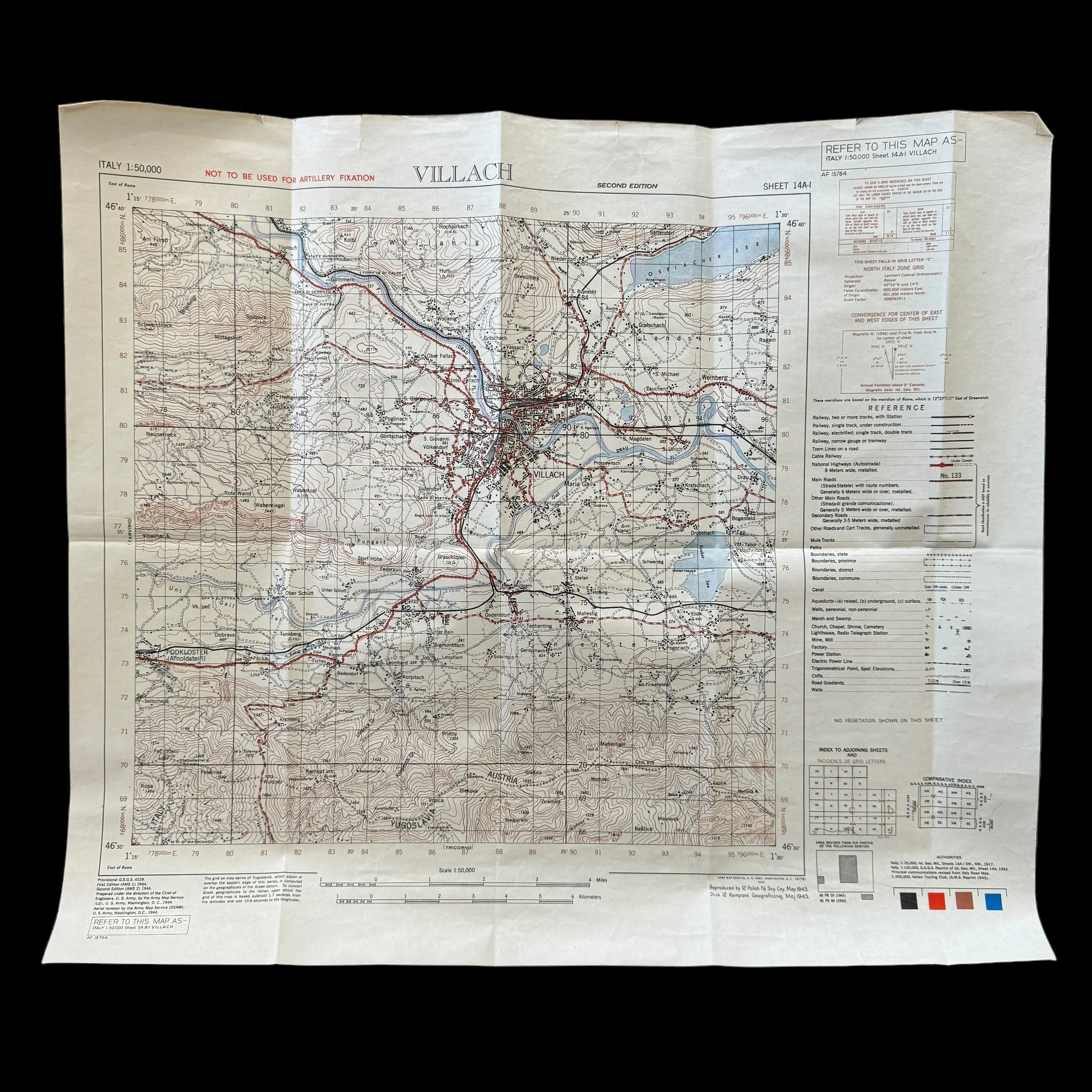
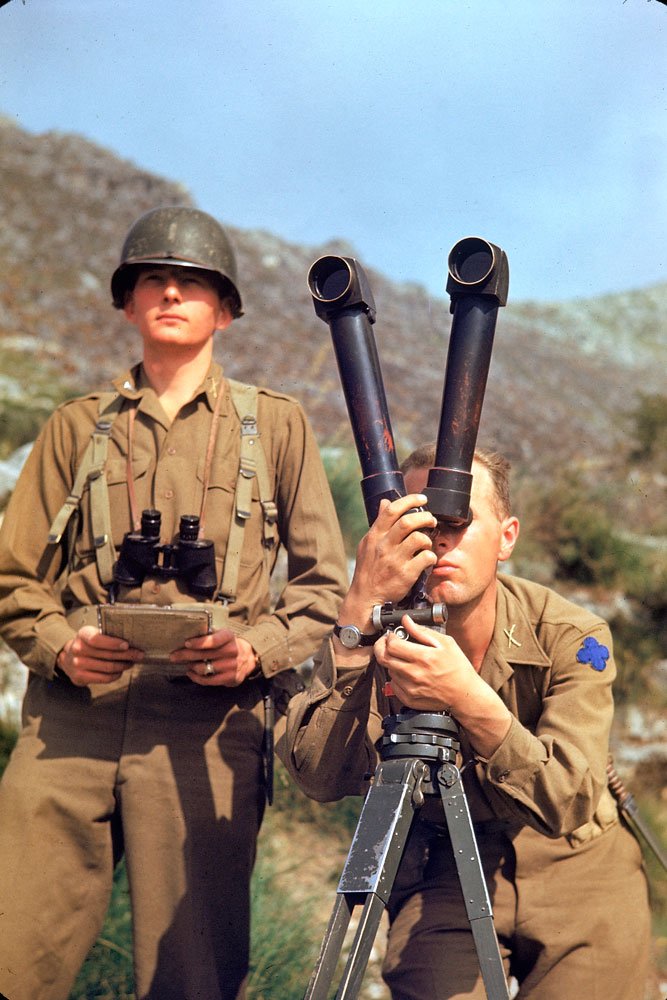
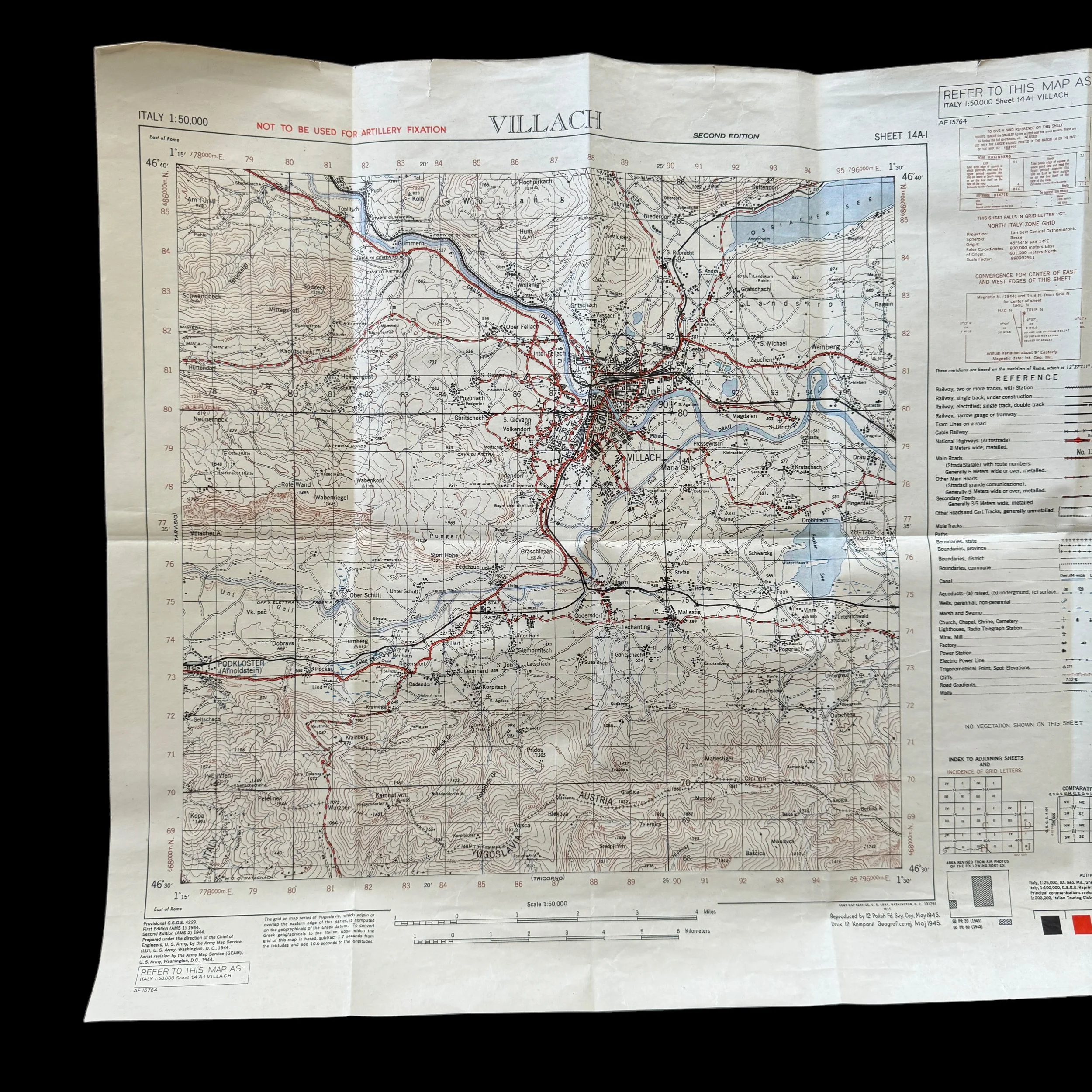
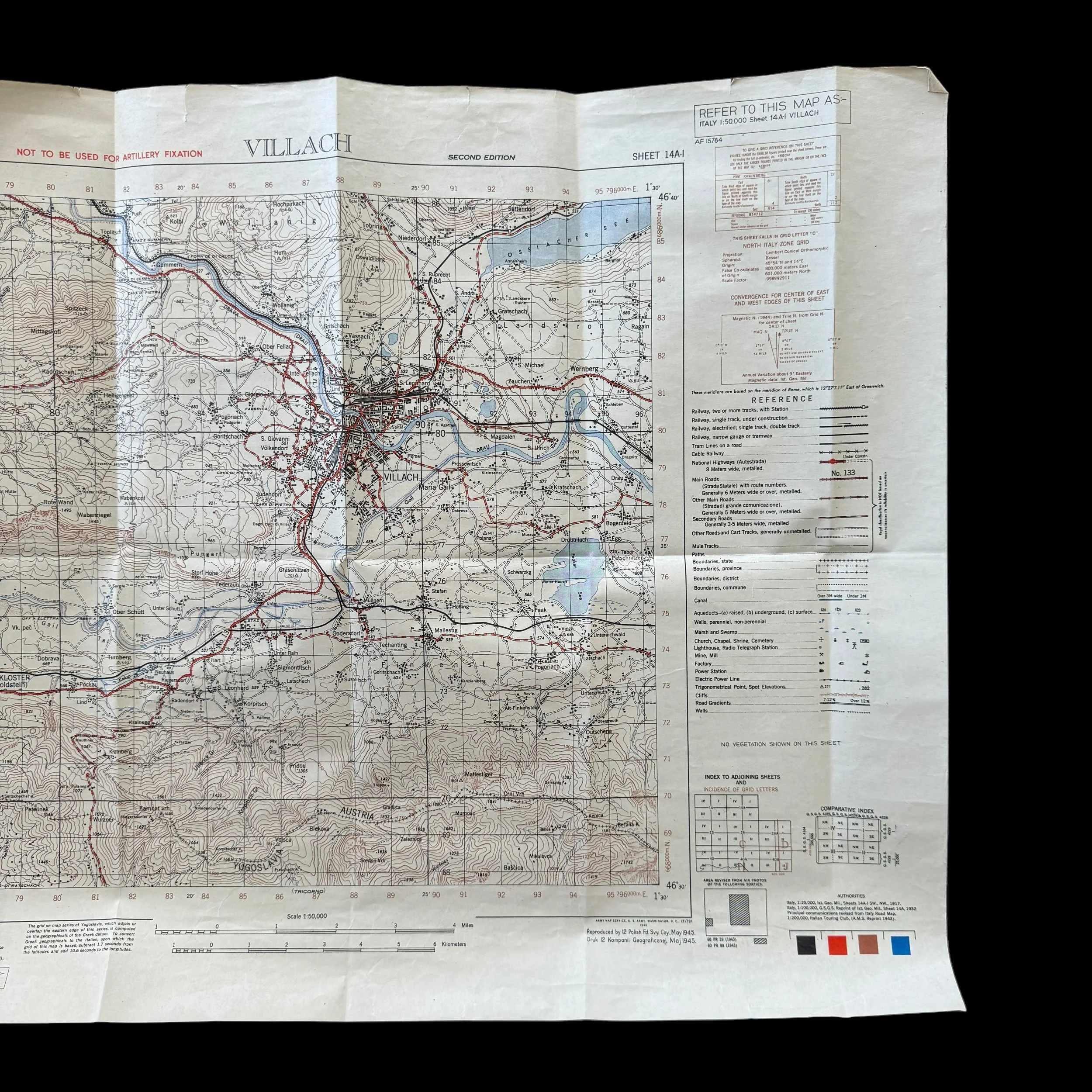
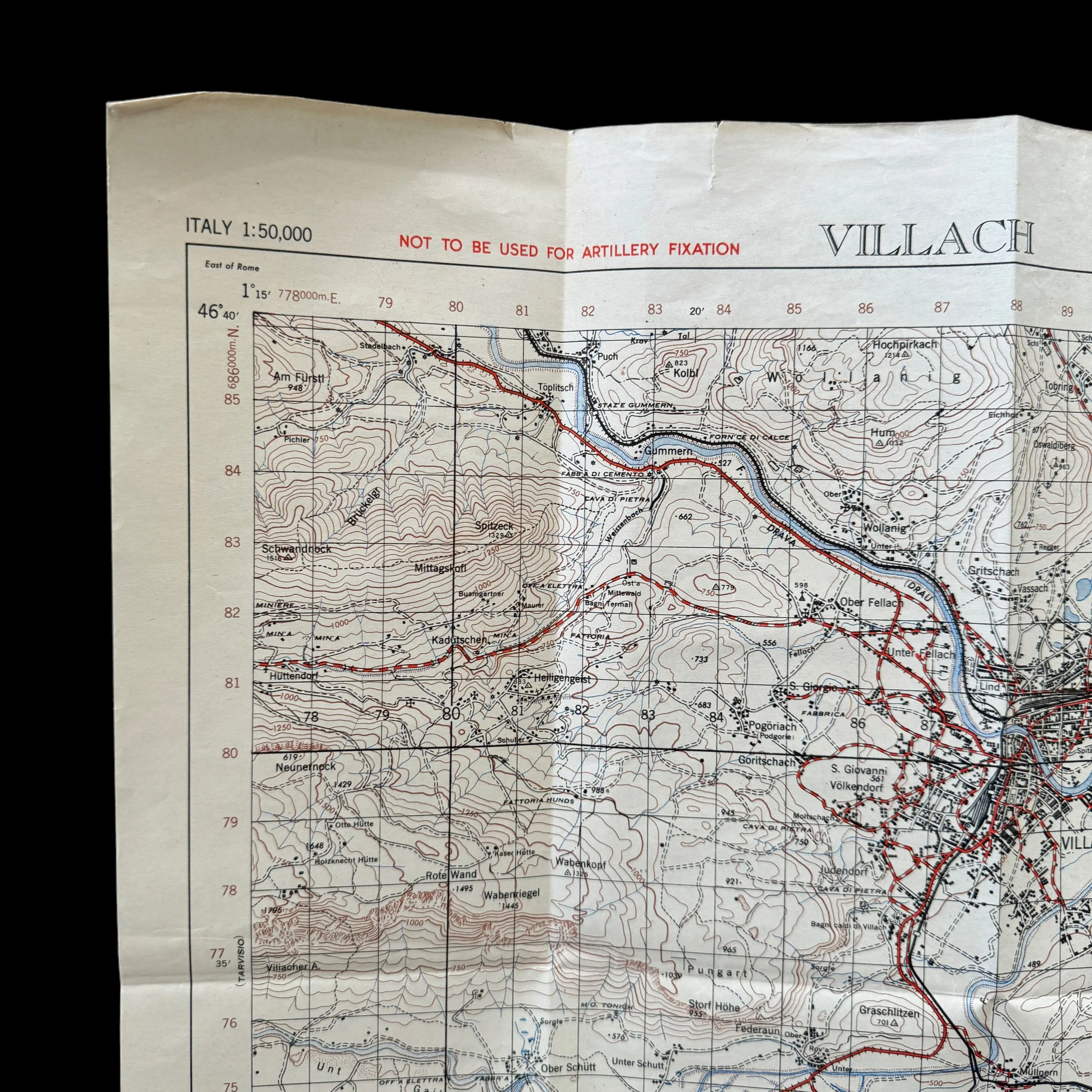
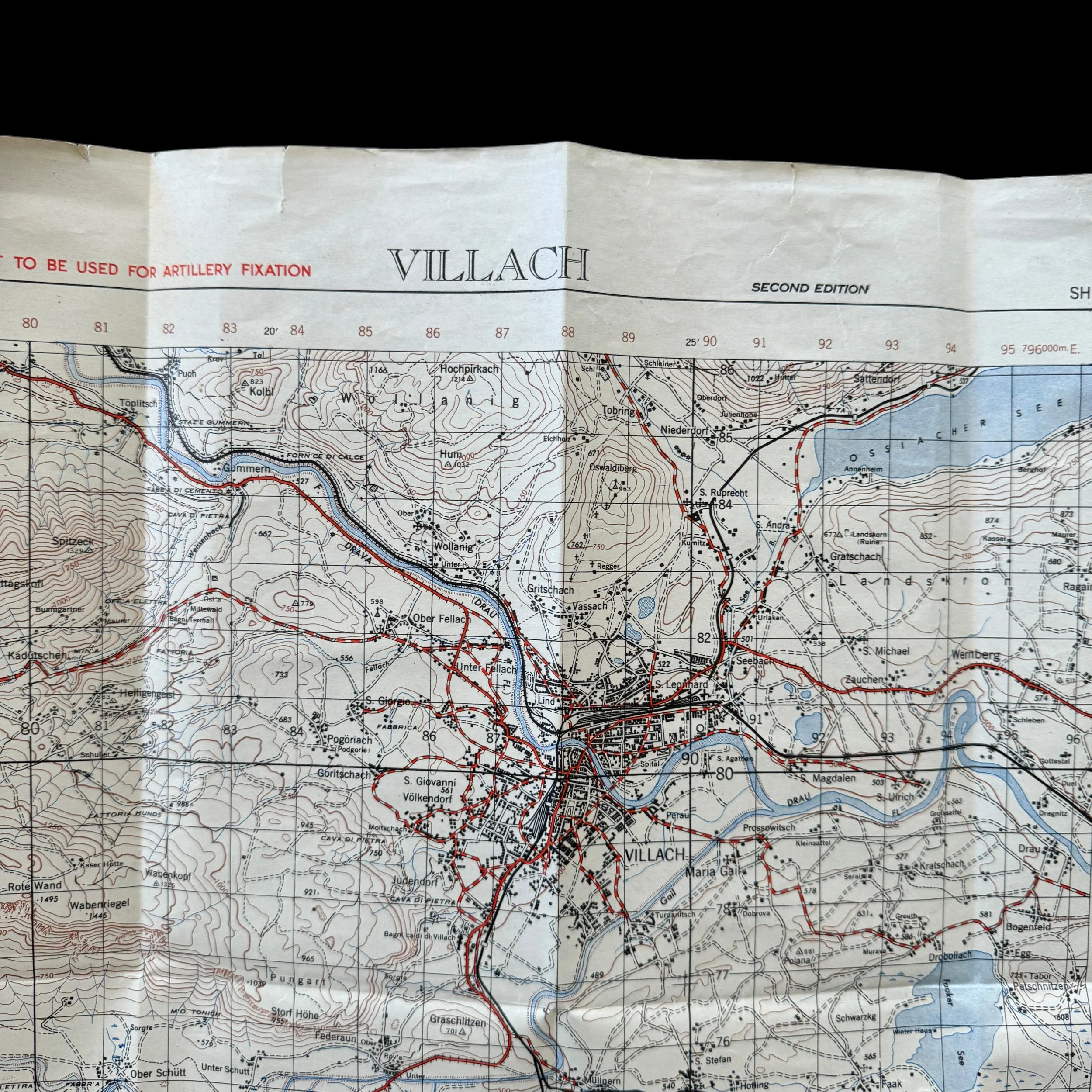
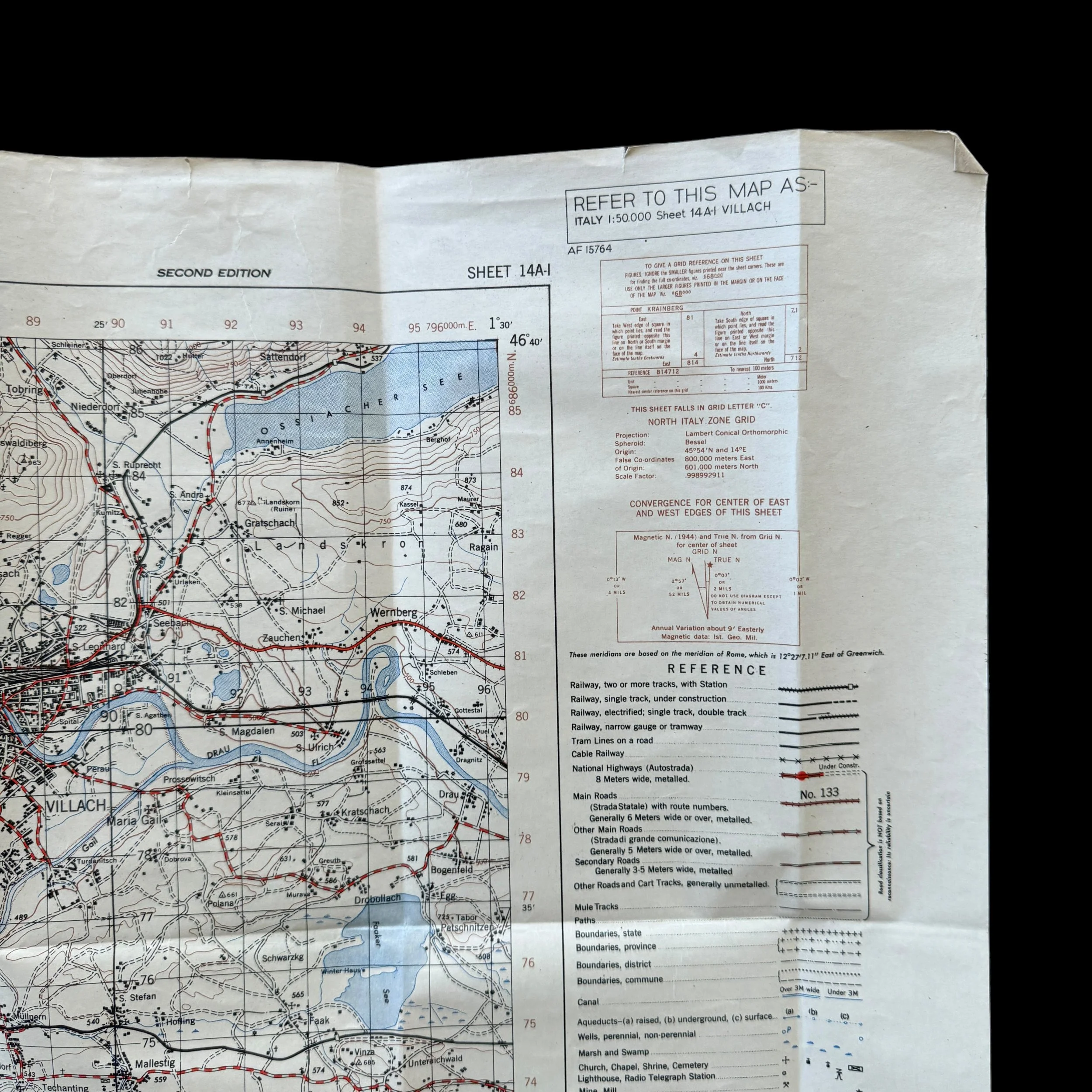
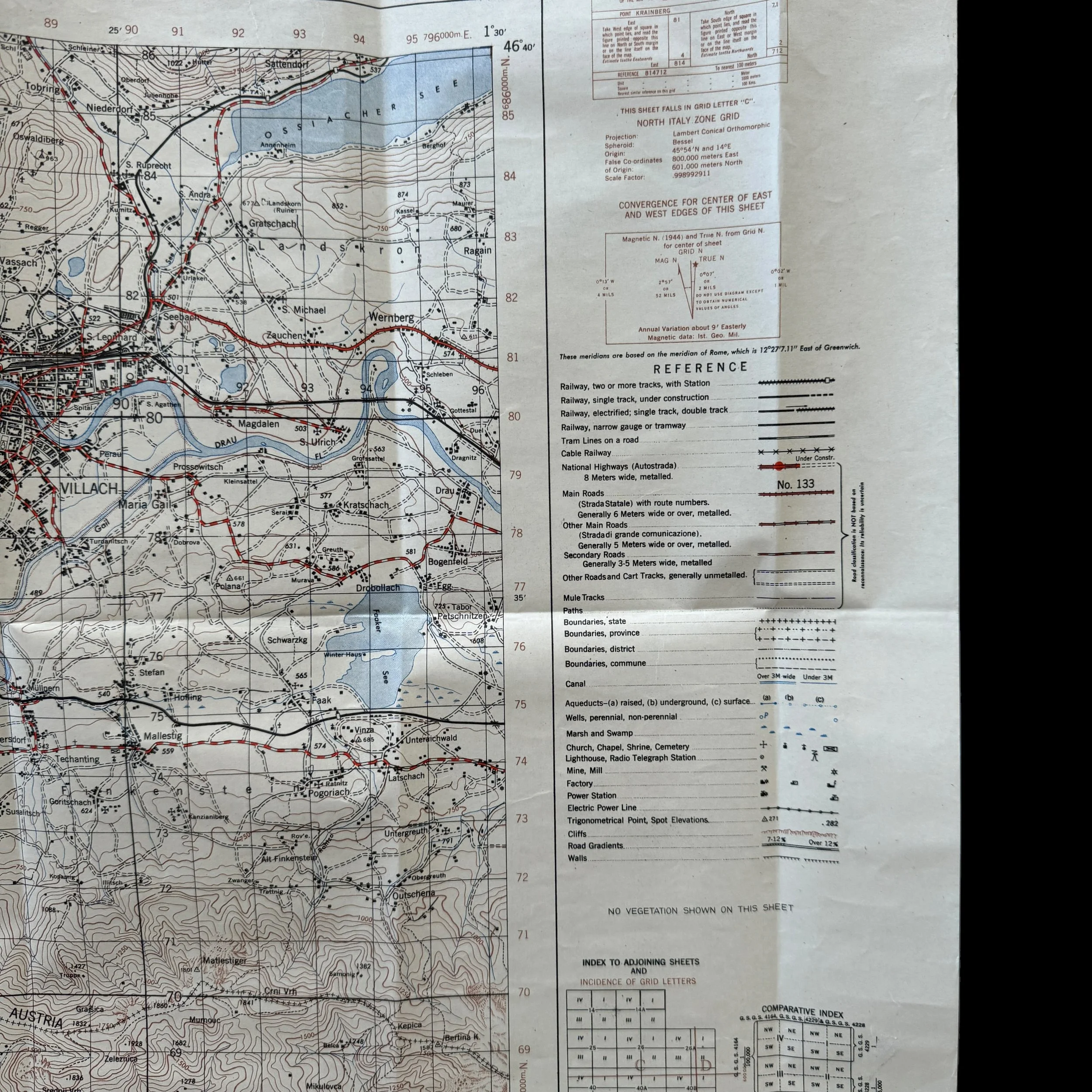
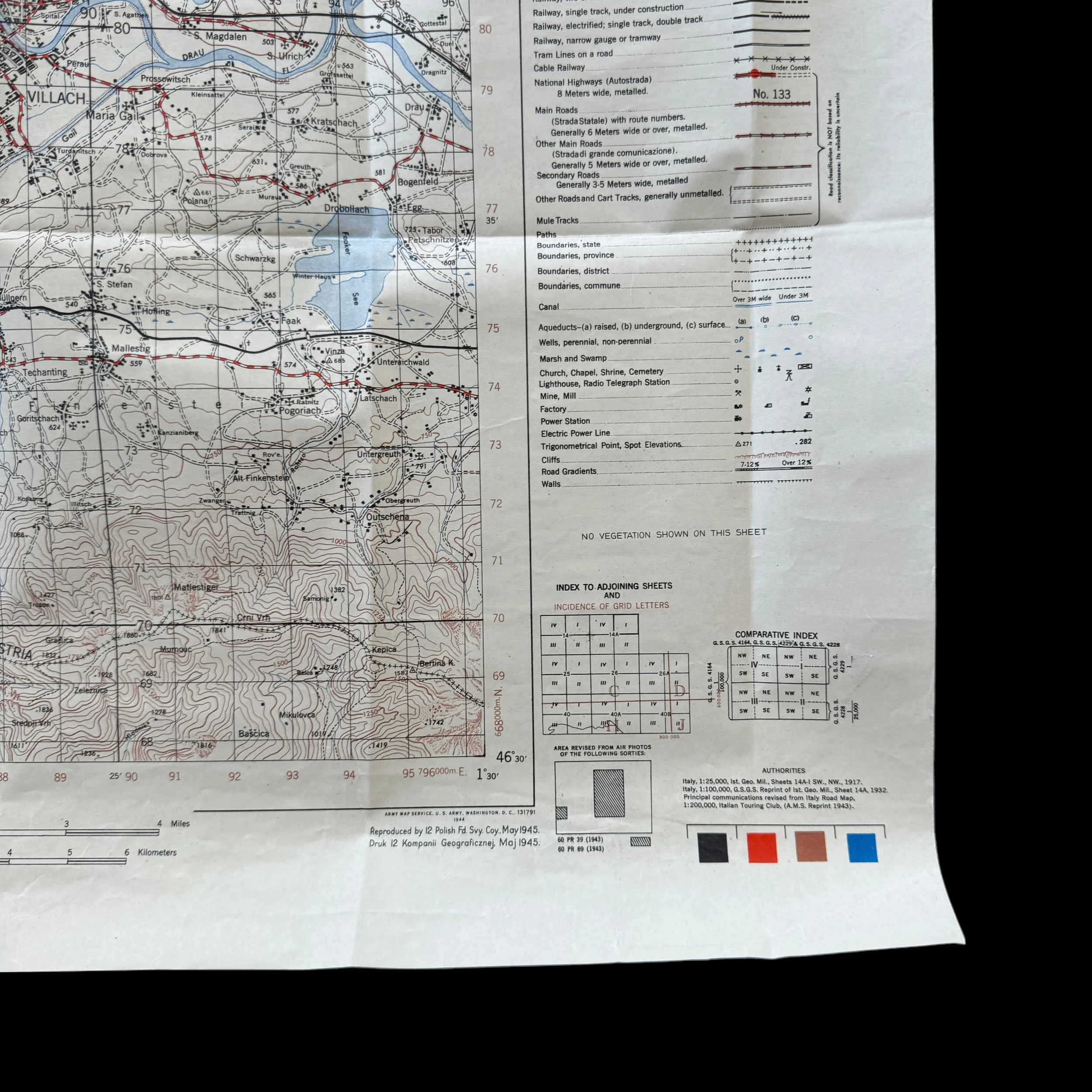
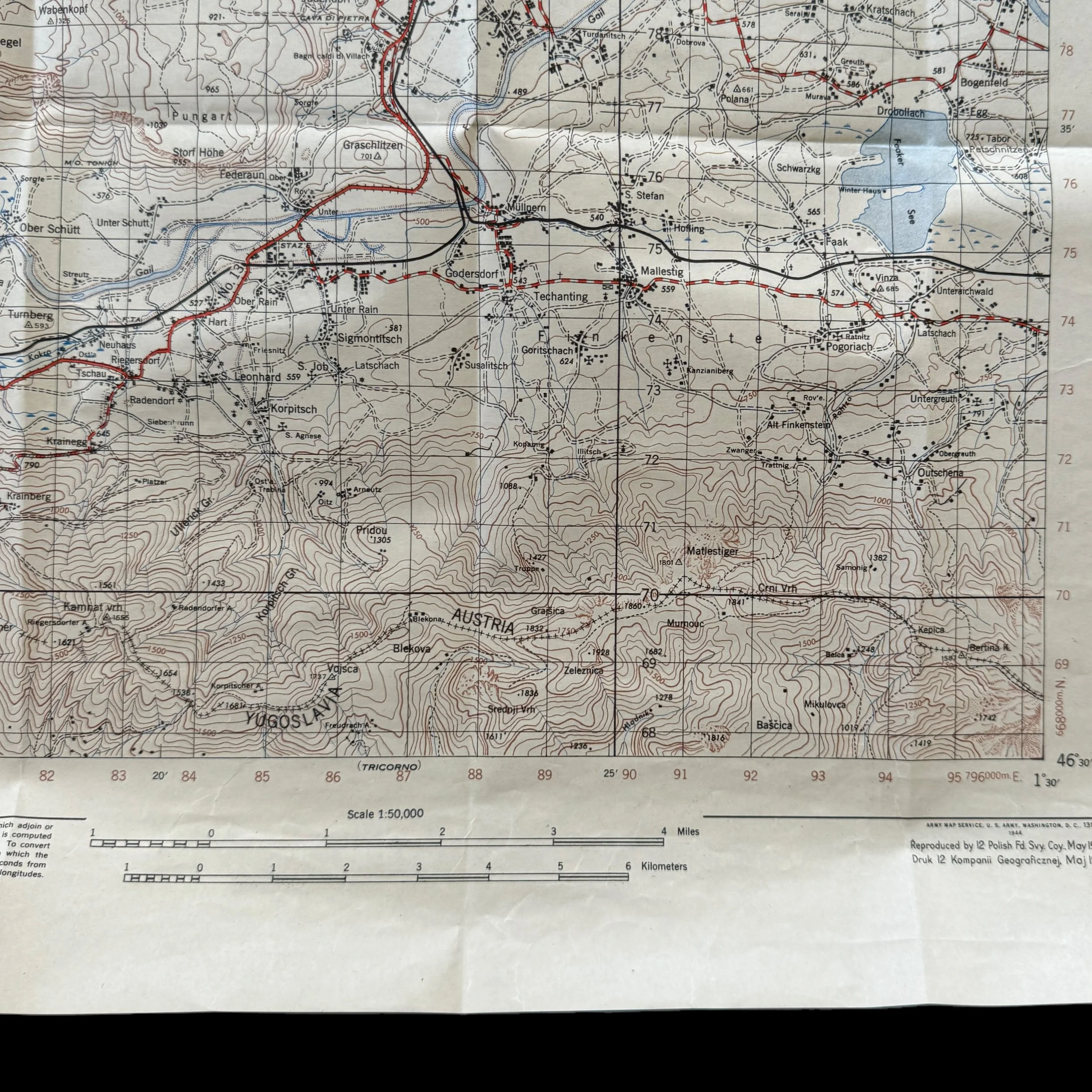
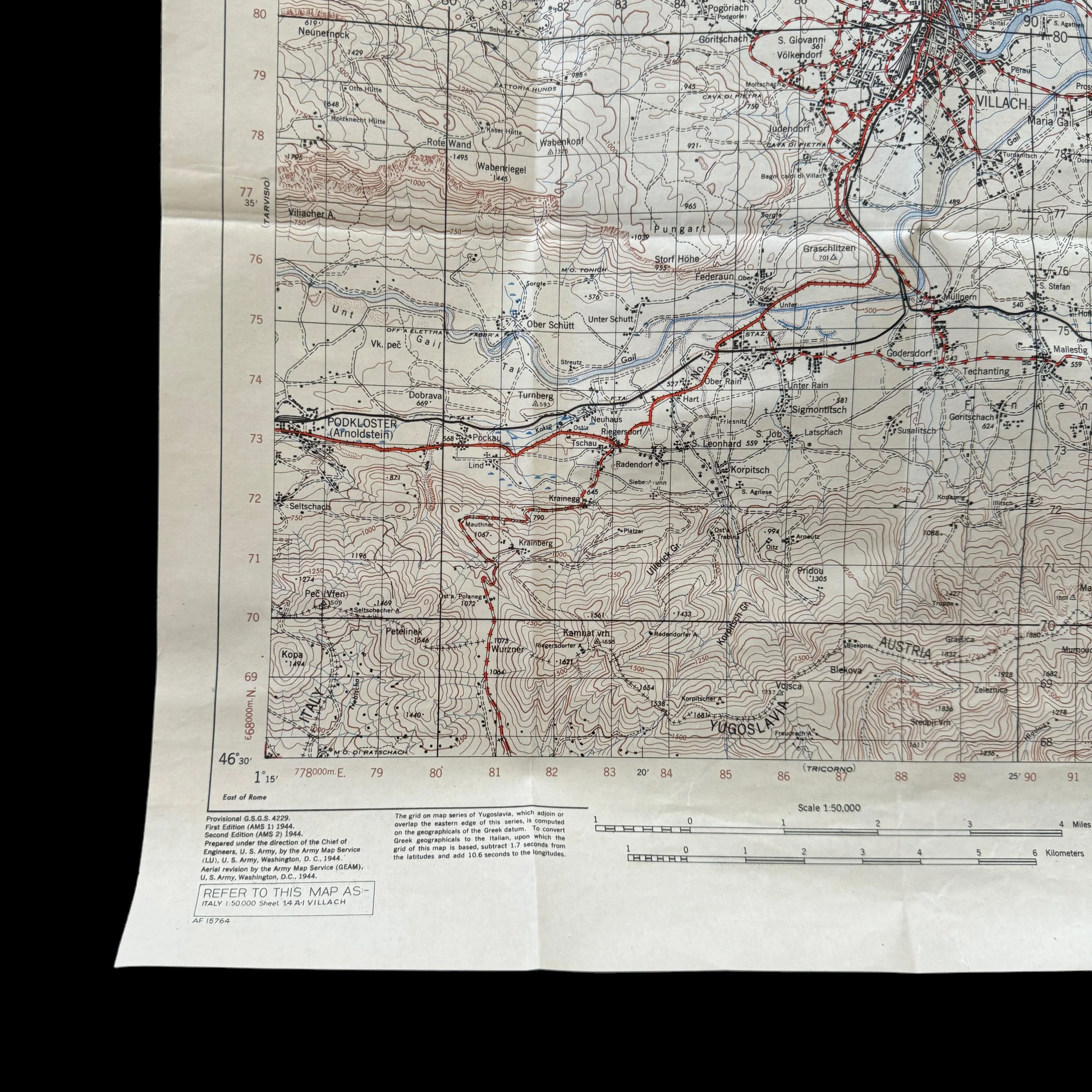
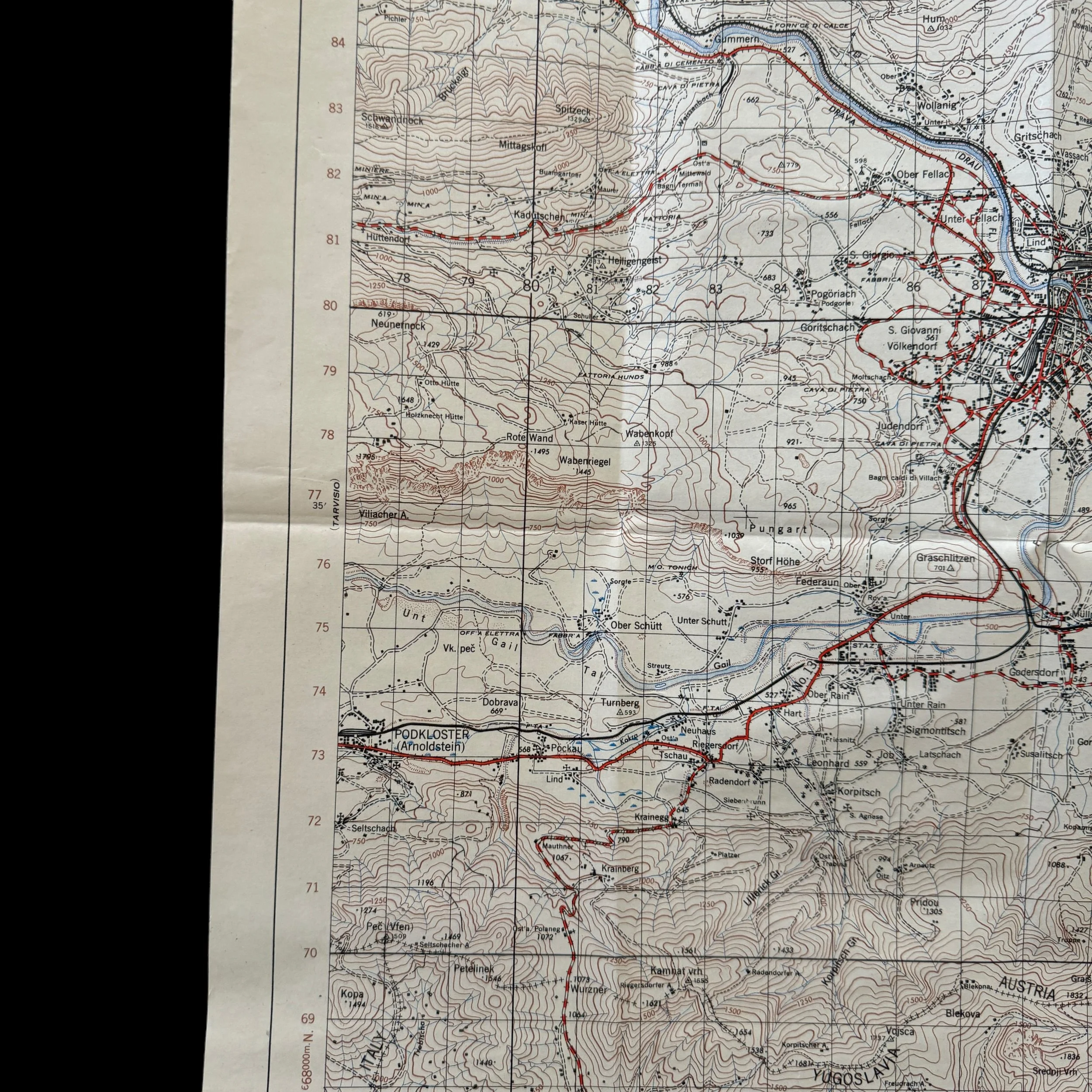

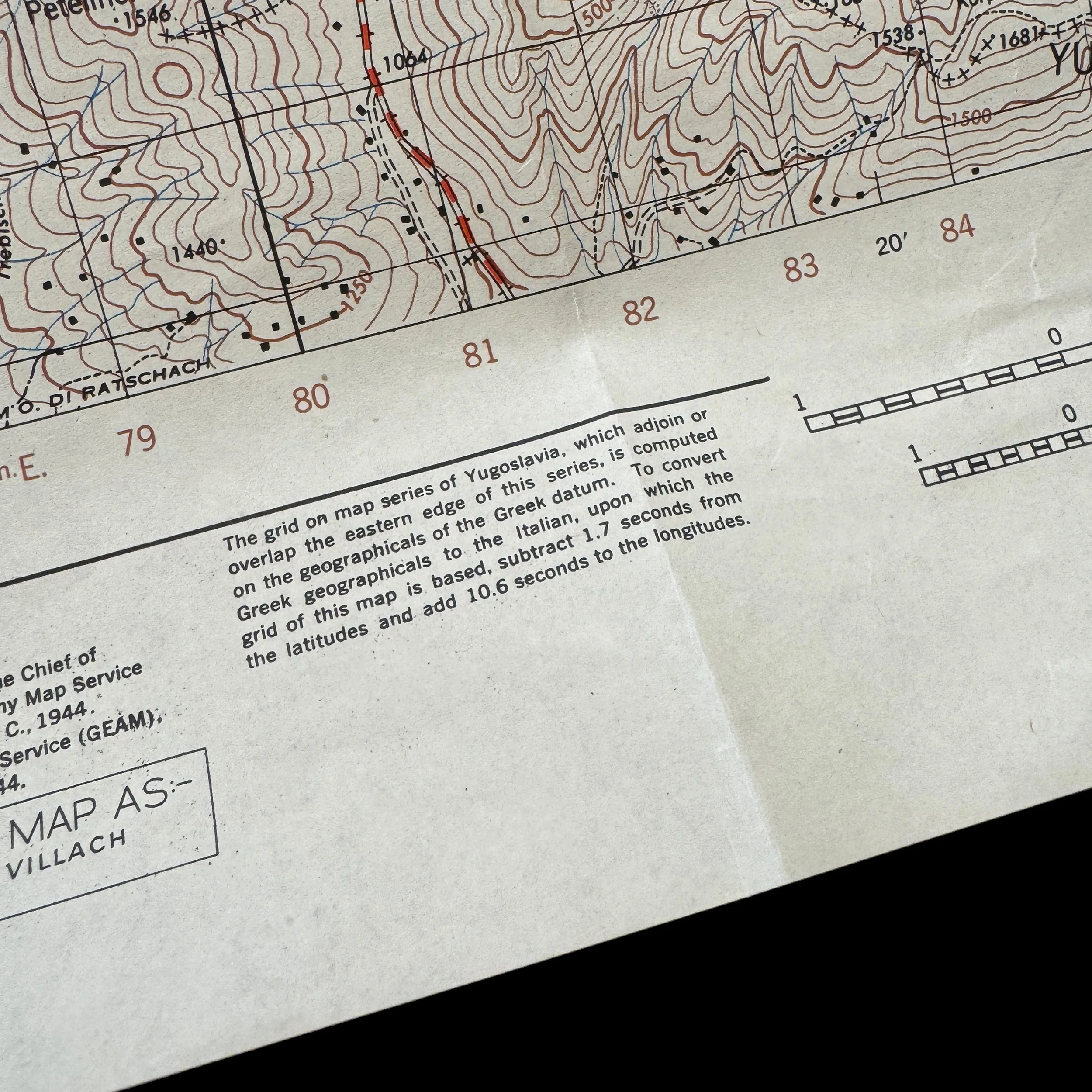
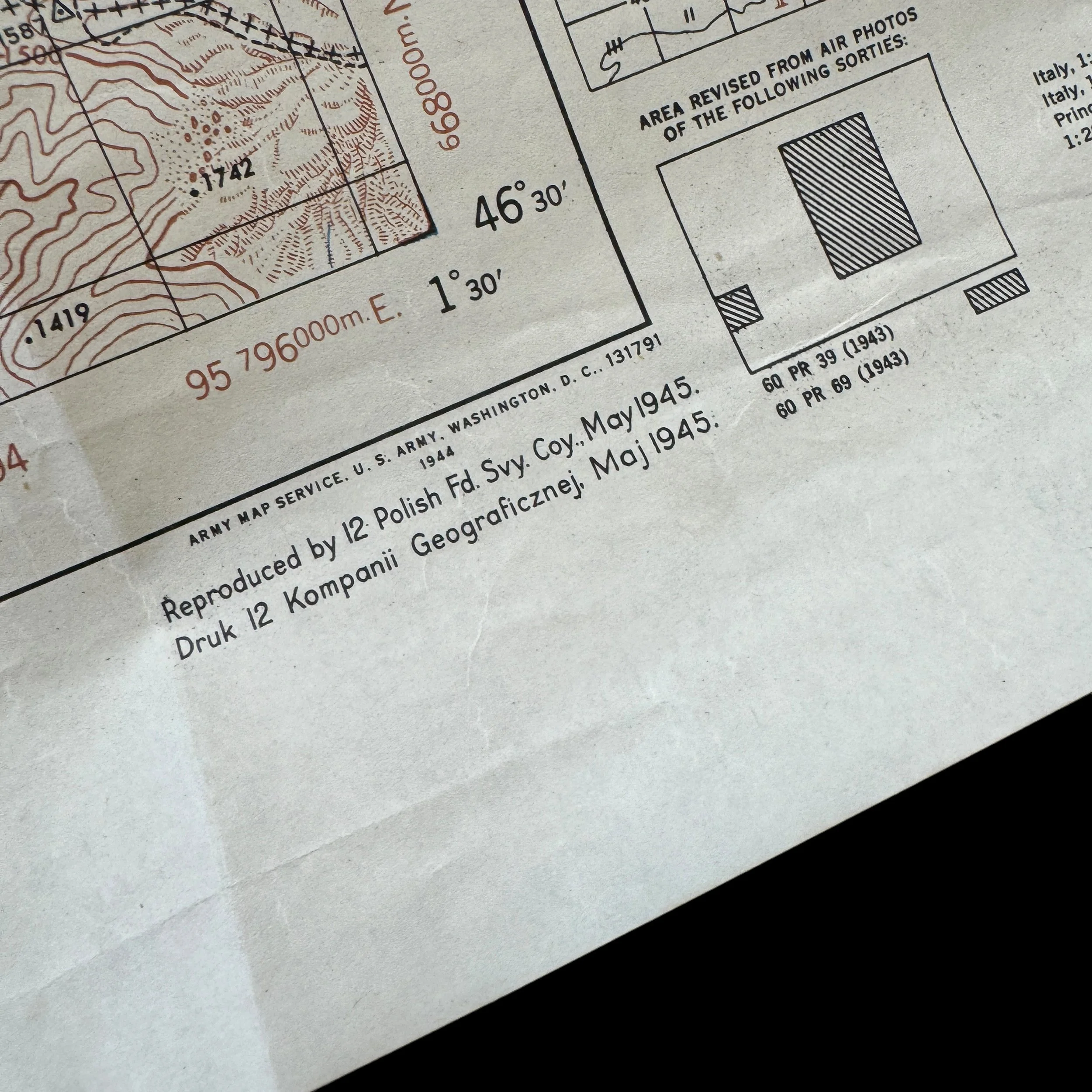
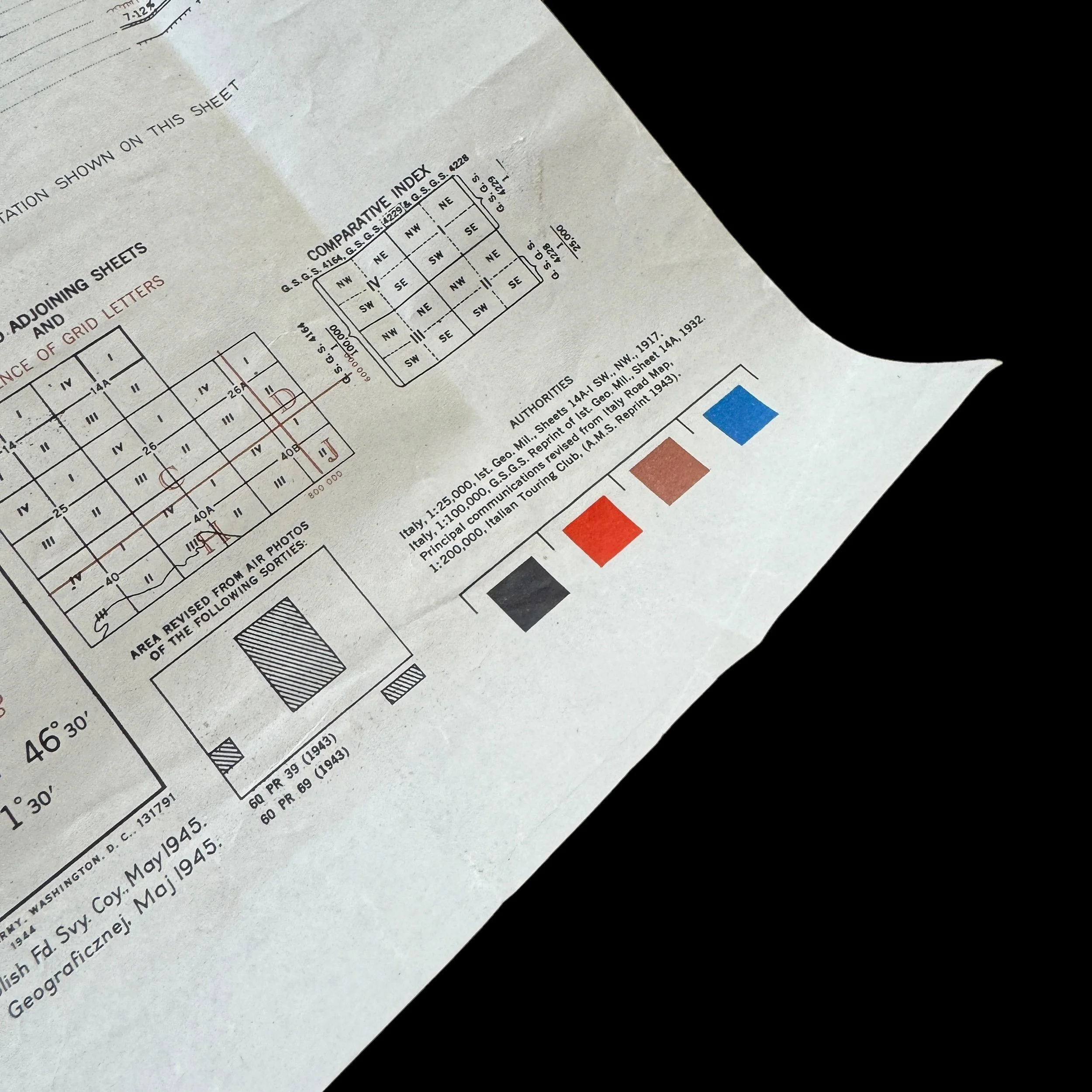
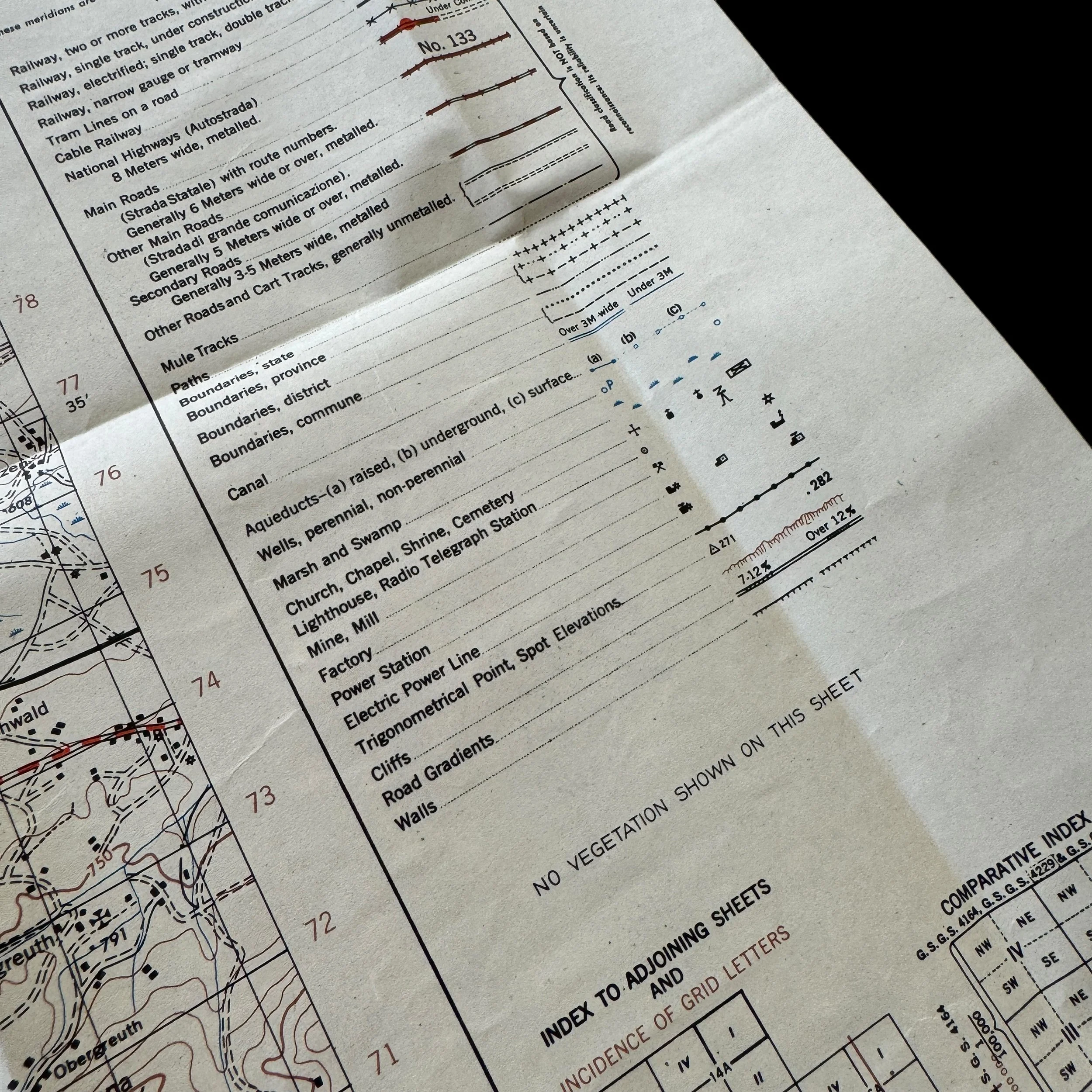
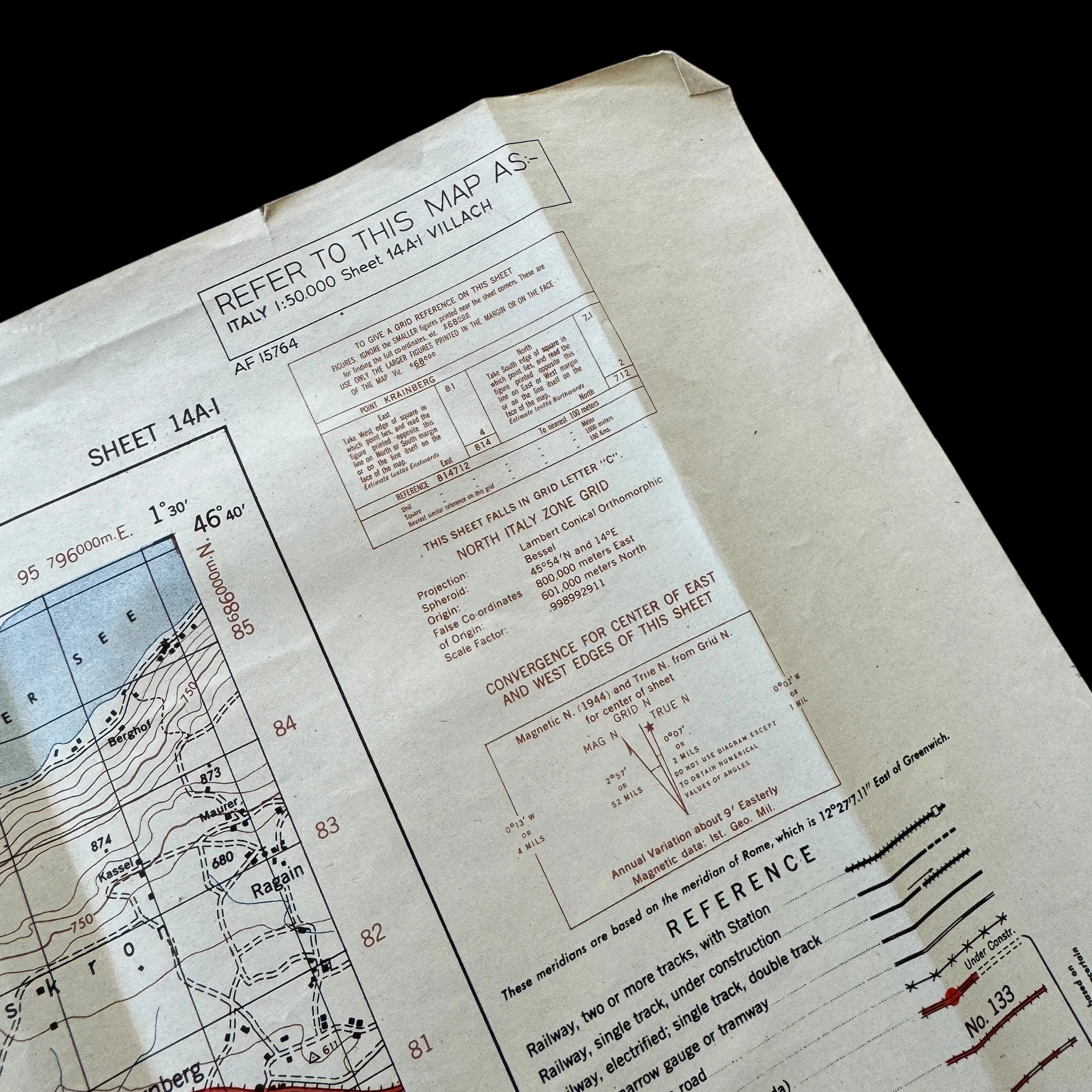
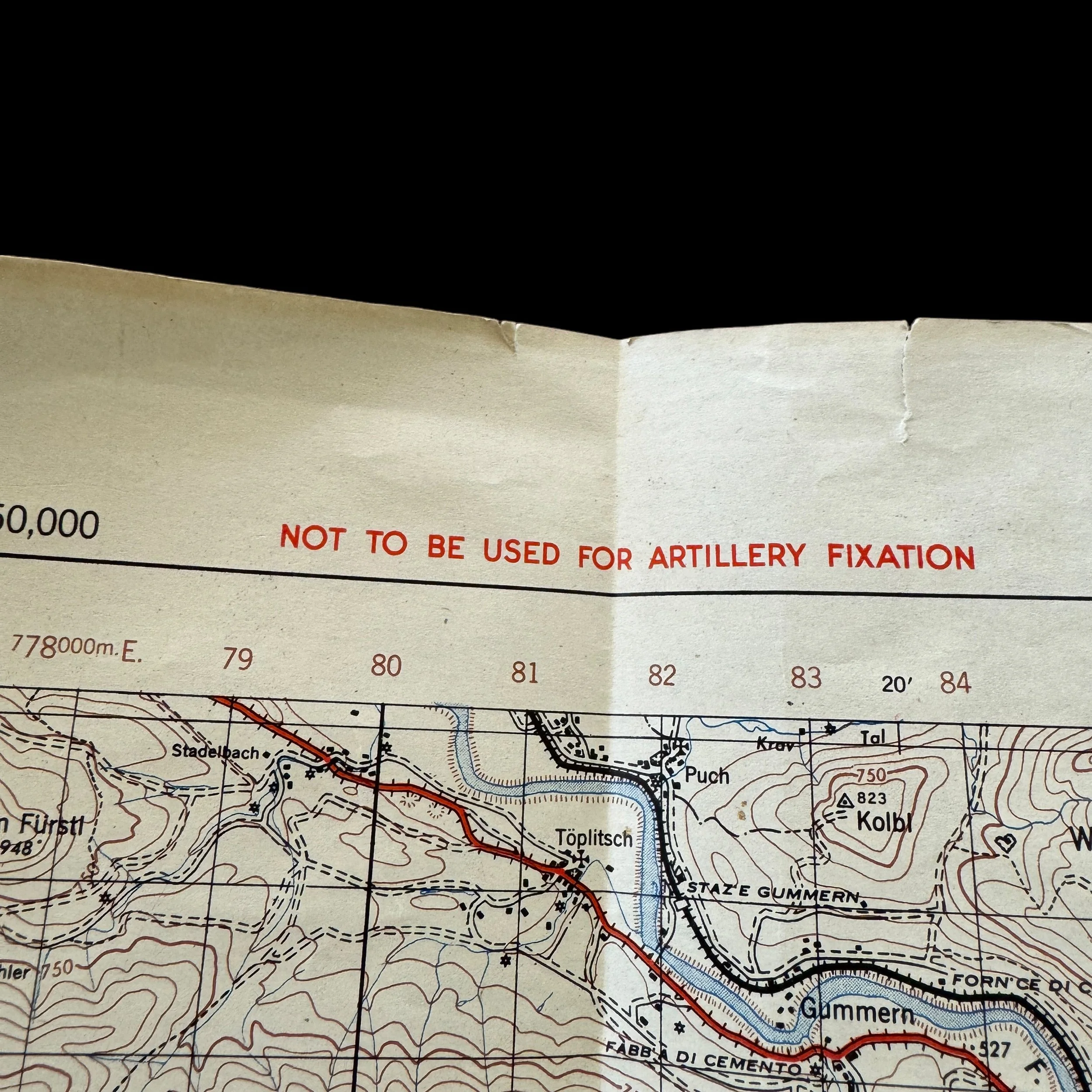
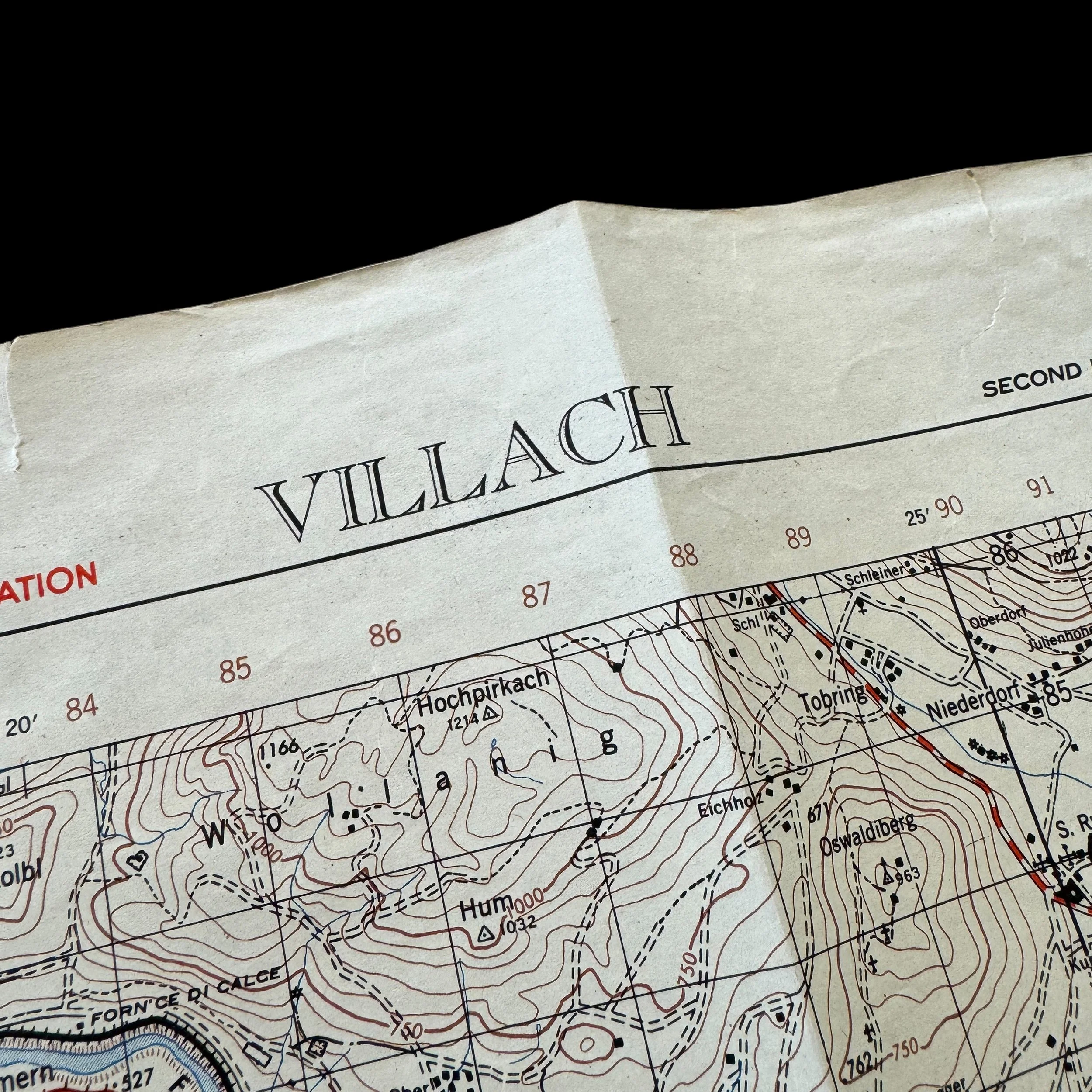

WWII Villach Italy U.S. Infantry & Armored Division Allied Italian Campaign Italy Combat Map
Comes with a hand-signed C.O.A.
This rare and museum-grade original WWII U.S. combat map was used by U.S. Infantry and Armored Division's during the Allied Italian Campaign. The Italian Campaign began in 1943 with the Allied invasion of Sicily, which saw a series of brutal and hard-fought battles as Allied forces pushed northward through Italy. The campaign aimed to liberate Italy from Axis control and open a new front in Europe, drawing German forces away from the Eastern Front and relieving pressure on Soviet forces.
The city of Villach, situated in the Carinthian region of Austria, played a significant role during World War II due to its strategic location near the Italian border. Although not located in Italy, Villach's proximity to Northern Italy and the role it played in the German war effort makes it a pertinent subject when discussing military operations in the region. During the war, Villach became an essential hub for German military operations, serving as a critical rail and supply center for Axis forces. The city and surrounding areas were also subject to extensive Allied bombing campaigns and military operations, contributing to the overall Allied strategy in the region.
Villach's Strategic Importance
Villach's importance during World War II stemmed from its geographical location and infrastructure. As a major rail junction, Villach connected several critical routes, including those leading to Italy, Yugoslavia, and Germany. The city's rail yards, bridges, and supply depots were vital for transporting troops, weapons, and supplies to the front lines. This made Villach a prime target for Allied forces aiming to disrupt German supply lines and weaken their capacity to wage war.
The mountainous terrain surrounding Villach also added to its strategic significance. The region's difficult terrain provided natural defenses for German forces, making it challenging for the Allies to penetrate. The area around Villach was heavily fortified, with numerous bunkers, anti-aircraft positions, and other defensive structures designed to protect the critical infrastructure from Allied attacks.
Allied Bombing Campaigns
Recognizing Villach's strategic importance, the Allies launched a series of bombing campaigns aimed at crippling the city's infrastructure and disrupting German military operations. The U.S. Army Air Forces (USAAF), along with the British Royal Air Force (RAF), conducted numerous air raids on Villach and its surrounding areas throughout the war. These bombing missions targeted the city's rail yards, bridges, and industrial facilities, aiming to cut off supply lines and hinder German troop movements.
One of the most significant bombing raids on Villach occurred on March 19, 1945. During this raid, over 500 Allied bombers attacked the city, dropping thousands of tons of explosives. The raid caused extensive damage to Villach's rail infrastructure, destroying key bridges and rail lines and severely disrupting German supply routes. The bombing also resulted in significant civilian casualties and destruction of property, highlighting the devastating impact of the air campaign on the local population.
The bombing of Villach was part of a broader Allied strategy to weaken German forces in Northern Italy and Southern Austria. By targeting critical infrastructure in Villach and other key locations, the Allies aimed to isolate German forces in Italy and prevent them from receiving reinforcements and supplies. This strategy played a crucial role in the eventual Allied victory in Italy, as it weakened German defenses and forced them to retreat from key positions.
Operations in Northern Italy and the Alps
While Villach itself was not the site of major ground battles, the operations conducted by U.S. and Allied forces in Northern Italy and the Alps were closely linked to the city's strategic importance. The Italian Campaign, which began in 1943 with the Allied invasion of Sicily, saw a series of brutal and hard-fought battles as Allied forces pushed northward through Italy. The campaign aimed to liberate Italy from Axis control and open a new front in Europe, drawing German forces away from the Eastern Front and relieving pressure on Soviet forces.
As Allied forces advanced through Italy, they encountered stiff resistance from German troops, who had established a series of defensive lines across the country. The most formidable of these was the Gothic Line, a heavily fortified defensive line running across the Apennine Mountains in Northern Italy. The battle for the Gothic Line was one of the most challenging and costly of the Italian Campaign, with both sides suffering heavy casualties.
The operations in Northern Italy were closely connected to the situation in Villach and the surrounding regions. As the Allies advanced through Northern Italy, they sought to cut off German supply lines and disrupt their ability to reinforce their positions. The bombing of Villach and other key targets in the region was a critical part of this strategy, as it aimed to sever the links between German forces in Italy and their bases in Austria and Germany.
The operations in the Alps, particularly in the Brenner Pass region, were also closely linked to Villach's strategic significance. The Brenner Pass, located on the border between Italy and Austria, was a crucial route for German troop movements and supplies. Allied forces sought to capture the pass and sever this vital connection, further isolating German forces in Italy. The capture of the Brenner Pass in April 1945 by Allied forces marked a significant turning point in the campaign, as it effectively cut off the remaining German forces in Italy from their supply lines.
The Liberation of Villach and Aftermath
As the war in Europe drew to a close, Villach became one of the final battlegrounds in the region. In May 1945, as German forces retreated in the face of the advancing Allies, Villach was occupied by British and U.S. forces. The city's capture marked the end of its role as a key hub for German military operations and the beginning of its post-war recovery.
The liberation of Villach and the surrounding region was part of the broader Allied push into Austria and Southern Germany in the final months of the war. The fall of Villach, along with other key cities and towns in the region, helped to hasten the collapse of Nazi Germany and bring an end to the war in Europe.
In the aftermath of the war, Villach, like much of Austria, faced the challenges of reconstruction and recovery. The city's infrastructure, heavily damaged by the bombing campaigns, required extensive rebuilding. The occupation of Austria by Allied forces, including the division of the country into occupation zones, also had a significant impact on Villach and its residents.
The operations in and around Villach during World War II were a crucial part of the broader Allied strategy in Northern Italy and Southern Austria. Villach's strategic importance as a rail and supply hub made it a key target for Allied bombing campaigns, which aimed to disrupt German military operations and weaken their defenses. The capture of Villach and the surrounding region by Allied forces marked a significant step towards the eventual defeat of Nazi Germany and the liberation of Europe.
While the city itself was not the site of major ground battles, the operations conducted by U.S. and Allied forces in the region played a critical role in the success of the Italian Campaign and the broader war effort. The story of Villach during World War II is a testament to the importance of strategic infrastructure and the impact of air power on the outcome of the war.